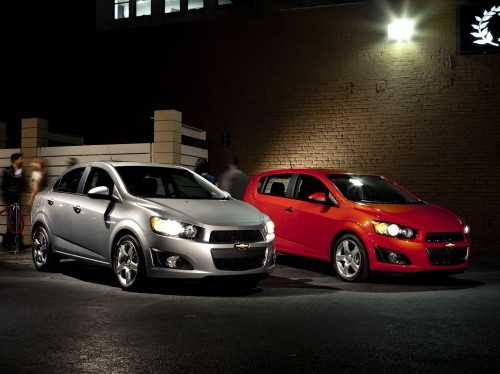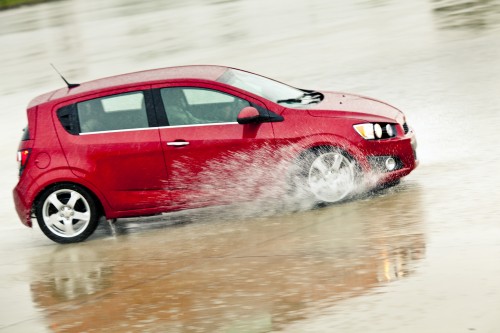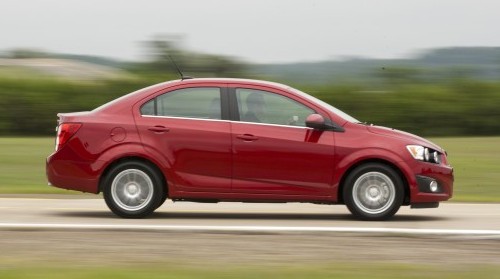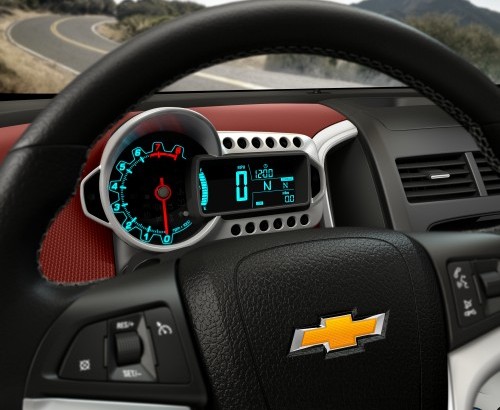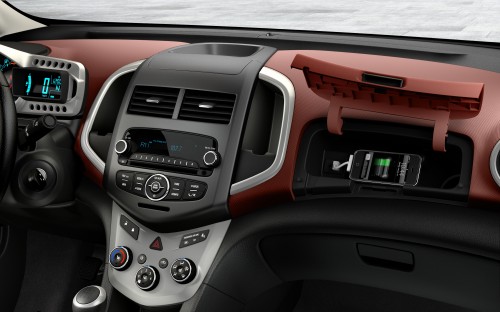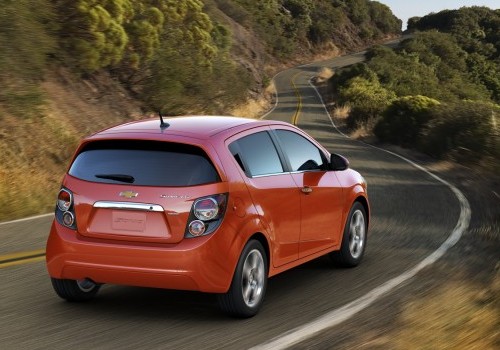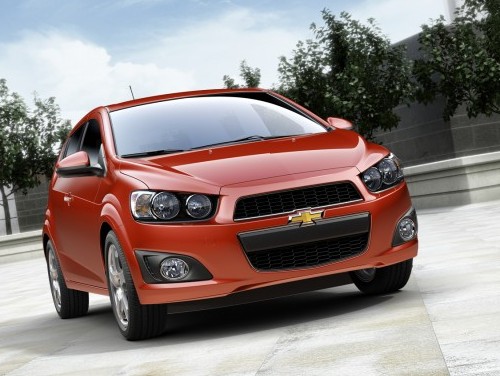2012 Chevrolet Sonic: Another Small Car Done Right
- September 22, 2011
- Chevrolet, GM, New Model Introductions, On The Road: Driving Impressions
- Posted by Ed Kim
- Comments Off on 2012 Chevrolet Sonic: Another Small Car Done Right
As I drove the new Sonic, Chevrolet’s replacement for the unloved Aveo, I realized something. There really are no bad small cars in the marketplace anymore. The Sonic accelerated with authority. It was quiet. It was nimble. It rode nicely. It had plenty of creature comforts. It was even nice to look at. Truly, being behind the wheel of the Sonic was an entirely agreeable place to be.
This does speak volumes about how far the entry level car has come. The Sonic’s place in the Chevrolet lineup can be traced back to the Metro, a tiny three-cylinder tin can of a car that was Spartan, slow, and best thought of as absolute lowest common denominator transportation. The Aveo, which preceded the new Sonic, was pretty basic stuff; it was noisy, slow, not very pleasant to drive or look at…and for all that, its fuel economy wasn’t even that good. The current crop of entry level cars have truly stepped things up, though. Fiesta, Accent, Rio, Sonic…all of these cars can now be legitimately bought because they are genuinely good, and not just because they are cheap.
The Sonic is GM’s first car on the new global Gamma platform. This small car platform will form the basis of many small GM cars around the globe, including small crossover SUV products. Sonic is a global car, sold in more or less identical forms around the world. GM Korea (formerly known as Daewoo) took the engineering and design lead on the car, and overall, they’ve done a fantastic job on all fronts.
For one, it looks great both in sedan and five-door hatch forms. They share an aggressively styled and contoured look, and the sedan looks surprisingly attractive given that many sedans in the class have awkward proportions thanks to these cars’ short length and tall height. Inside, it’s mostly hard plastics (as is expected in this class), but all of the surfaces are attractively grained and feel sturdy and well put-together. It looks good in there too, with a motorcycle gauge-inspired instrument cluster taking center stage up front.
Sonic is very well packaged inside, too. Thanks to its relatively tall build and high seating, there is plenty of usable space inside, even in the back. Legroom is generous front and rear, and notably, the sedan’s rear headroom is excellent despite the fastback roofline. This was accomplished by extending the rear glass far up into the roof, freeing up space inside that would otherwise be taken up by sheetmetal and headliner material. Storage space in the cabin is plentiful too, with a second upper glovebox supplementing the conventional one underneath, open and lined storage bins on either side of the center air vents, and large door pockets with cutouts for drink bottles.
The cargo areas for both the hatch and sedan are notable too. The hatchback features a false floor with plentiful hidden storage underneath, and the cargo cover can be neatly placed against the rear seatback if taller items need to be carried. The sedan’s trunk is simply enormous – it’s almost comically huge given the car’s petite outside dimensions.
But how does it drive? Very nicely, thank you. Sonic comes with two different engine choices, mirroring the offerings from the larger Cruze. The basic engine is a 138HP 1.8L four-cylinder that can be paired to a five-speed manual or six-speed automatic. The optional engine also makes 138HP from 1.4 liters and a turbocharger, paired to a six-speed manual or come Spring 2012, a six-speed automatic. Why spend the extra $700 for an engine that makes the same power as the standard engine? Two reasons: torque and fuel economy. The 1.4L turbo has ample reserves of power at any engine speed, and it gets 29 MPG in the city and 40 MPG on the highway. That’s 3 MPG better in the city and 5 MPG better on the highway than the 1.8L engine.
Either way, both engines feel peppy (the turbo feels peppier, of course) and refined. The 1.4 turbo felt noticeably more comfortable tackling the hills of San Francisco and the undulating terrain around nearby Half Moon Bay, with less engine noise and virtually no sensation of being strained.
The chassis and suspension was equally impressive. Engineers paid special attention to making the car feel substantial, and it shows. While nimble and agile through the corners, the Sonic has a nice heft to it. The structure is rock solid, the steering is responsive but nicely damped, and the whole affair is very quiet.
The Sonic is impressively well equipped too, particularly on the safety front. The basic LS model comes standard with ABS, traction control, stability control, OnStar with six free months of service, and get this: ten airbags! Also standard is air conditioning, remote keyless entry, turn-by-turn navigation as part of the free six months of OnStar, and even fifteen-inch alloy wheels (no steel wheels and plastic covers available at all for Sonic!). All this for just $14,495! The $15,695 LT adds a better sound system with six speakers, three months of SiriusXM satellite radio, power windows, and power heated outside mirrors. The top of the line LTZ, starting at $17,295, adds leatherette seating (faux leather, but extremely convincing), heated front seats, USB port, Bluetooth, cruise control, remote vehicle start, steering wheel audio/phone controls, fog lamps, and seventeen-inch alloys.
We came away very impressed with the car, even before taking into account its high-value pricing. It does everything a good car should, and adds a good dose of fun and refinement to that equation. In that sense, it’s a logical extension of what Chevrolet has done with the larger Cruze. It’s certainly in the top tier of small cars available in the U.S. right now, in this writer’s opinion up there with Fiesta, Accent, and Rio (and slightly better and slightly worse in various ways compared to each of them). One thing’s for sure: there has never been a better time to buy an entry level small car.
